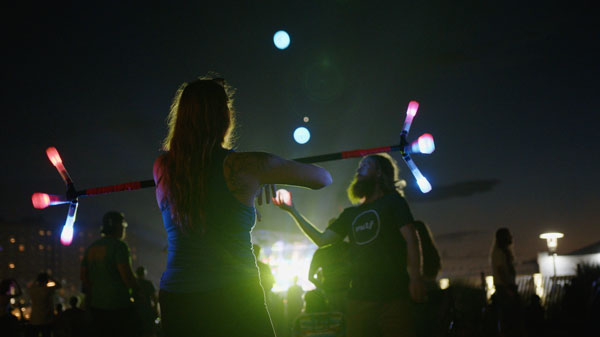
I have been fan of Marjorie Conrad’s art for a while and she was kind enough to respond to my queries via email. Here is our conversation about her experimental feature film Body Issues:
Nigrin: Your experimental feature, Body Issues, takes viewers on a wild journey in and around your hometown of Seattle, Washington. Shot using bodycam, the protagonist Jane, guides us with her voice as she glides on foot through streets, parking lots, motel rooms, parks and beaches on wintry nights. Tell us a bit about the history behind making this film.
Conrad: In Body Issues, perception is a lie. Jane feels observed and controlled by unknown forces; her recordings manifest her search for a cure. I envisioned something dark, idiosyncratic, desolate, transient, incomplete, mutable, but emotionally warm. I was interested in filmmaking detached from traditional directorial intention and attached to a kinetic physical presence.
Nigrin: While watching your film, which has an absence of human faces, I felt as if I was experiencing someone else's dream. Is this what you were shooting for?
Conrad: I aimed for an altered state between embodiment and disembodiment, a sensation of the world through Jane's perspective as she struggles to make sense of her existence.
Nigrin: One of the members of the New Jersey Film Festival jury commented that he felt he was watching a David Lynch film. Are you a fan of his work?
Conrad: I admire David Lynch's work (Inland Empire), as well as Philippe Grandrieux's (Un Lac), Sandra Wollner's (The Trouble with Being Born), and Rick Alverson's (The Mountain).
Nigrin: Another juror wondered if Jane was real or even alive as the protagonist mentions that she is struggling with a connection with her body. Is Jane alive? Is she real? Or is she a cinematic creation?
Conrad: I maintained ambiguity to expand the scope of interpretation; the lack of closure and relief prevents the viewer from focusing on the wrong thing.
Nigrin: What type of camera did you use? Was it difficult shooting in such inhospitable conditions?
Conrad: I used a GoPro Hero 8, a wearable action camera for extreme sports. Its small size, convenience, ruggedness, and low profile allowed me to focus on movement. I also liked the implications of picking a camera whose brand promotes a heroic image through user-generated videos to show a paranoid character's confusion, desperation, and helplessness. Still, Jane's determination in an unpredictable environment could be said to align with GoPro's mission. The film leaves her status as a "hero" or "antihero" open.
Nigrin: How long did it take to make Body Issues and were there any obstacles to finishing it?
Conrad: Making the film was a personal, intuitive process. Shooting took a month, and post-production lasted about six. The surrounding context was stressful, but the project remained a refuge.
Nigrin: Are there any memorable stories while you made this film or any other info about your film you would like to relay to us?
Conrad: I lost my way in the Black Forest while location scouting for the final scene, which felt fitting. A pink plant tie poking through the snow saved me.
Body Issues will be playing at the Spring 2024 New Jersey Film Festival on Saturday, February 10 – Online for 24 Hours and In-Person at 5PM in Voorhees Hall #105/Rutgers University, 71 Hamilton Street, New Brunswick, NJ. For more info and tickets go here.











